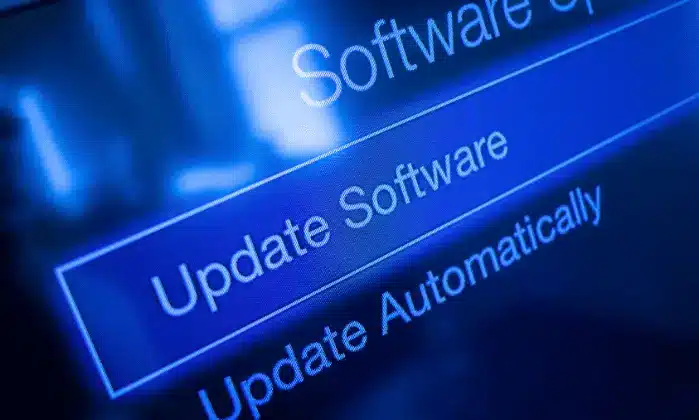Technology and Software Data Breaches
Technology and software data breaches occur when cybercriminals gain access to sensitive digital information through flaws, vulnerabilities, or security failures in technology platforms, applications, and software systems. Information leaks can occur at any time due to outdated security measures, underlying software vulnerabilities, or simple human error, exposing sensitive data such as Social Security numbers, bank account details, login credentials, and confidential business communications.

Home • What is a Data Breach? • Data Breach by Industry • Technology and Software Data Breaches
- November 7, 2025
- Understanding Tech and Software Data Breaches
- What Are the Common Causes of Technology and Software Data Breaches?
- Consequences of Technology and Software Data Breaches
- Legal Options for Victims of Data Breaches
- High-Profile Technology and Software Data Breaches
- Technology and Software Data Breaches in 2025
- Rising Credential Theft Trend in 2025
- Protecting Yourself Against Technology and Software Data Breaches
- Stay Informed of Tech Data Breaches and Speak With a Data Breach Lawyer
With the rise of cloud adoption and interconnected platforms, technology providers have become prime targets for cyberattacks. According to the Center for Strategic and International Studies, cyberattacks have escalated in both scale and sophistication. Not sure if you qualify? Contact Class Action U for free, no-obligation guidance and to connect with a data breach attorney.
Understanding Tech and Software Data Breaches
From cloud storage to SaaS platforms, technology is tied to just about everything we do. And while we rely heavily on digital systems to store personal, financial, and business information, this convenience may leave individuals vulnerable to sensitive information leaks such as cyberattacks and data breaches.
A single data breach incident can impact millions of users and lead to lasting financial and reputational harm to institutions, their employees, and customers.
What Are the Common Causes of Technology and Software Data Breaches?
Data breaches can occur at any time, although they rarely happen by chance. They typically arise from systemic weaknesses or preventable human error. Common causes include:
- Unpatched Software Vulnerabilities – Hackers frequently target outdated systems that lack security updates.
- Misconfigured Cloud Storage – Databases in Amazon AWS, Azure, or Google Cloud can expose millions of records if left unsecured due to lax security protocols.
- Weak Authentication Systems – Weak passwords or password policies, combined with the absence of multi-factor authentication (MFA), make it easier for hackers to gain unauthorized access.
- Third-Party Vendor Risks – If a single supplier has been compromised, the resulting breach can spread across multiple organizations.
- Insider Threats – Employees or contractors may inadvertently or intentionally leak sensitive information.
If you’re worried about your online information, reviewing the most common causes of data breaches can help keep you informed and prepared.
Consequences of Technology and Software Data Breaches
When a technology or software platform is breached, the devastating fallout can extend from out-of-pocket costs to regulatory scrutiny. Victims often face serious consequences, such as:
- Identity Theft – Stolen personal identifiers, such as Social Security numbers, can be misused to create fraudulent accounts.
- Financial Loss – Hijacked banking or credit card information often leads to unauthorized transactions.
- Business Disruption – Downtime, customer distrust, and regulatory investigations are common, resulting in financial loss.
- Legal Liability – Companies may face class action lawsuits, fines, and other penalties.
If you suspect your personal information has been leaked, learn what you can do after a data breach for the next steps.
Legal Options for Victims of Data Breaches
Technology breach class action lawsuits are designed to hold companies accountable for negligence and can help victims recover compensation. If your personal or financial data was exposed, you may qualify to join or file a case. Types of compensation victims could receive as a result of their settlement may include:
- Identity theft protection costs
- Reimbursement for unauthorized charges
- Damages for emotional distress
- Time and expenses spent on fraud prevention
Specialized data breach law firms can evaluate whether you meet eligibility requirements. Your attorney will help determine if you can sue a company for a data breach and whether to join a class action lawsuit or file an individual claim. Deadlines to file vary by state—act quickly to protect your rights.

High-Profile Technology and Software Data Breaches
In recent years, widely reported incidents show how a single exploited vulnerability can ripple across sectors and expose vast amounts of data, eroding trust and necessitating costly recovery efforts. Here are a few illustrative examples:
SolarWinds Data Breach
This software supply chain attack impacted U.S. federal agencies and Fortune 500 companies. Malicious code inserted into routine updates gave hackers backdoor access, exposing highly sensitive information.
Microsoft Exchange Hack
Exploiting vulnerabilities in Microsoft’s email server, attackers gained entry to tens of thousands of organizations worldwide, including businesses and governments. Threat actors deployed web shells to maintain persistence and harvest mailboxes, triggering emergency patching, large-scale incident response, and breach notifications to affected users.
Okta Security Incident
Okta, a primary identity and access management provider, suffered a breach that underscored how even companies specializing in cybersecurity are not immune to attacks. Unauthorized access to support environments exposed limited customer data and session information in some cases, highlighting downstream risks and the need for rapid credential rotation and strong MFA policies.
MOVEit File Transfer Breach
By exploiting flaws in widely used file transfer software, attackers compromised thousands of organizations globally, disrupting operations and exposing sensitive records.
Technology and Software Data Breaches in 2025
Security researchers and regulators continue to warn about third-party vendor compromises, cloud misconfigurations, and credential-phishing campaigns impacting both large enterprises and smaller vendors. Regardless of sector, the patterns are similar: a single weak link—supplier access, cloud settings, or stolen credentials—can expose large volumes of data and trigger costly incident response. This year alone has already seen a series of major incidents:
- Allianz Life Data Breach (July 2025): 1.1 million customers and employees of Allianz Life were affected after hackers exploited a third-party Salesforce system, exposing their data. While Allianz managed to contain the breach, the case highlights the increasing risks associated with third-party vendors. The company notified the FBI and offered identity protection services.
- Tencent Cloud Misconfiguration Leak (April 2025): Misconfigurations in two Tencent Cloud sites inadvertently exposed source code, login credentials, and configuration files. The leak highlighted the risks of misconfigured cloud storage, which can compromise entire infrastructures.
- Google / Salesforce Intrusions and Gmail Credentials (August 2025): Google warned its 2.5 billion Gmail users worldwide to be on the lookout for a rise in phishing scams, after attackers breached Google’s Salesforce database. Google urged users to reset their passwords in light of the breach.
Rising Credential Theft Trend in 2025
Credential theft surged 160% in 2025, with 14,000 incidents reported in a single month, accounting for nearly 20% of all breaches. GitHub repositories, Gmail, Discord, and Microsoft accounts were among the most frequently targeted.
With the proper mitigation measures in place, theft can be minimized. The most successful mitigation strategies include:
- Improving password policies by implementing stronger, unique passwords
- Enabling multi-factor authentication (MFA)
- Limiting user access to sensitive data and systems
- Providing ongoing employee training on phishing scams and cyber hygiene
Protecting Yourself Against Technology and Software Data Breaches
While you can’t always prevent companies from being hacked, you can take steps to minimize your own risk:
- Use strong, unique passwords for each of your accounts.
- Enable multi-factor-authentication (MFA) wherever possible.
- Monitor financial and credit reports regularly.
- Freeze your credit if you suspect your data has been compromised.
- Stay informed on recent data breaches and take immediate action if you’ve been affected.
The FTC’s Data Breach Response Guide provides further recommendations.
Stay Informed of Tech Data Breaches and Speak With a Data Breach Lawyer
If your personal information was exposed in a technology or software data breach, you may feel overwhelmed, frustrated, or unsure where to turn. You are not alone, and there are steps you can take to protect yourself and your loved ones.
At ClassActionU.org, we provide resources, updates, and insights into software breach incidents and legal responses. Speaking with a data breach lawyer can be critical in determining whether you are eligible for compensation. Our team can connect you with experienced attorneys specializing in data breach class action lawsuits—there is no cost, and no obligation. Click here to begin your data breach investigation today.
